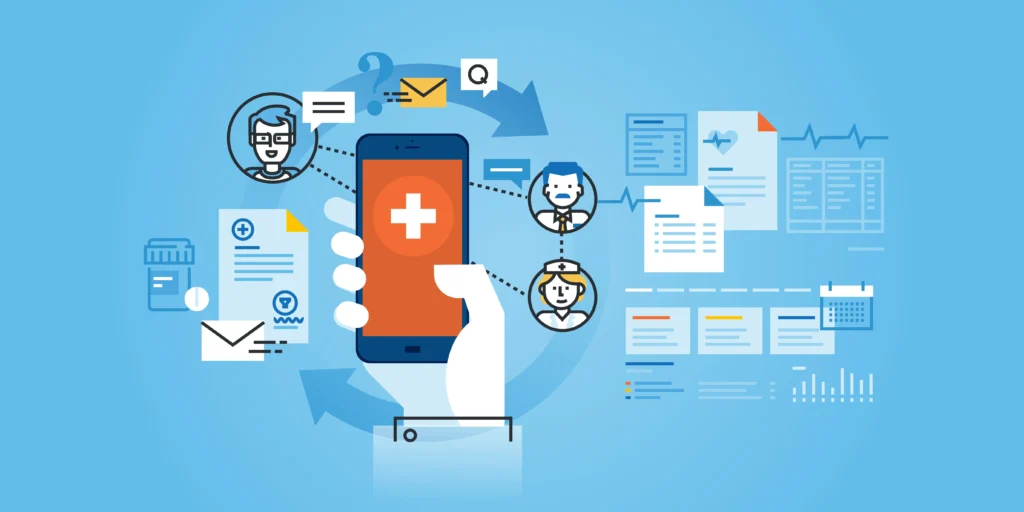Read Time:
2 Min
Revenue cycle goals for many leaders are aggressive, but may not be totally realistic with their current operations.
According to a study produced by TransUnion Healthcare on January 27, 2021 – “rising unemployment and income loss, will continue to play a major role in health insurance coverage disruptions across the nation.”
Protection of the revenue that has returned for your operations since the pandemic disruption becomes tantamount to success of business operations. Cash realization is what makes the engine run.
With these challenges, here are 4 areas to provide focus for your RCM leaders to make sure financial outcomes are met, and barriers to success are addressed quickly and appropriately.

One example we can give, is patient authorization forms, where payors are getting significantly more aggressive on patient authorizations. As we know, payors are already constantly placing barriers for providers to overcome prior to achieving their entitled reimbursement. Now, two to pay particular attention to are Aetna and Cigna plans. Both insurers, who according to BeckersASC.com, has over 42.5 million members, have required further patient participation in the appeals process before providers can initiate any action.
The change became effective January 1, 2021, and requires that the provider have the patient complete a form created by each payer, that gives the provider the authority to act as proxy for a multitude of revenue cycle related actions. CRx recommends that if your patients have either of these payers as their carriers, that your admission package include these forms for their completion. The form should be reviewed with a financial counselor as there are areas that are confusing, and work against the provider that should be managed if at all possible.
Another example of this is regulatory activity & up-to-date insurance coverage changes. We have read and sometimes seen In and Out of Network Cost Sharing Waivers given by health insurers.
The forgiveness has included Covid-19 related testing and encounters, Inpatient out of pocket adjusted for Covid-19 related admissions, and Telehealth visits and early refills on prescription medicine patient share discounts have been passed on to consumers also.
However there has been confusion at times as there are many incidents of patients getting billed for the services mentioned above also. There are reports documented in the media citing financial ruin because of Covid related expenses, despite the CARES Act and what payers have stated. Each facility has a moral obligation to consider if and when to apply forgiveness for your patient.
Then we have Surprise Billing Legislation – Providers affected by this legislation should be evaluating its impact on its front end operations to prepare for process change the back half of the calendar year.
Develop process flow around how your billing will comply with the legislation
Discuss the process with your business partners to include hospitals, ASCs etc.
Establish policies and procedures to comply

Many of our clients have experienced a shift in the types of services they provide for their patient clientele. Patients who may have once decided to fix a health issue with one, maybe two surgeries for a practice are now managing their issue through evaluation and management and telehealth visits. How does this affect your cash expectations?
Kaiser Permanente states that by June 2020, 30% of all outpatient visits nationally we be performed via telemedicine. The insurance giant utilization of the telehealth was used 90% of the time for its appointments during the height of the pandemic, compared to 26% during the same time the previous year. They accomplish this without reducing access to care for its connected patients. They also stated that they believe the US companies could save $6 billion a year with more investment.
Practices and businesses should begin to examine how this shift is and will influence their financial outlook moving forward. As services shift to more outpatient management, and less face-to-face treatment, does that increase or lower your cash expectation? How will such a movement change your staffing needs? Is your operation equipped with the appropriate technology to provide telemedicine as a service?

With the need to support staff who are mostly working from home in today’s environment, the need for efficiency and technology support will be a priority for collection efforts made in 2022-2023. In particular, workflow optimization is an essential component. Understanding workflow is critical because the most common issues on the back end of collections are caused by breakdowns in the early parts of the revenue cycle, like clinical denials or incorrect 837 data. We’ve automated AR workflow by identifying “at-risk” accounts so an FTE doesn’t have to spend the time doing so. Second is data reconciliation. One of our strongest procedures to optimize revenue is our in-depth reconciliation processes throughout collections. We found that when we follow behind another billing company or inhouse billing, there are many missed encounters which can lead to 5-10% missed revenue in AR follow up alone. So we’ve put multiple checks in place to ensure that every single claim has been followed up on, processed by the insurance company, and there is money in the bank. Here’s an example of a common mistake made by many providers when they are not taking the time to capture each encounter accurately and failing to reconcile billed claims to payment.
| Daily Billed Claims | 20 |
| Claims Processed Successfully | 17 |
| Claims Not Processed | 3 |
| Lost Revenue / Encounter Not Charged | $3,000 |
| Total Lost Daily Revenue | $9,000 |
| Total Lost Monthly Revenue | $18,000 |
In this example, the provider billed 20 encounters and 17 of them were successfully processed by the insurance company. But because the provider did not diligently follow up, the other 3 encounters were never processed by the insurance company. If each of these encounters were worth $3,000, this would result in $9,000 of missed revenue just that day. Now think if this error occurred every day, it could result in a $180,000 loss of revenue throughout the entire month!
The point is, even missing only one charge per day can add up to significant dollars lost in the long term.

Do you know if you are getting paid correctly? If that answer is anything but a confident YES, then chances are your facility is leaving money on the table. One of the most important imperatives of any RCM operation is to have targets through the cycle to meet and or exceed. The most important from a financial perspective in that tracking is cash receipts. Understanding what your team should collect based on the revenue produced tells executives whether the performance has been good enough or not. Having static goals unrelated to revenue produced creates tension in some cases where none is called for, and celebration in other instances where team members should be checking for issues blocking cash. Knowledge is power. Know what to collect based on the revenue your operation produced.
Additionally, here are some key metrics and reports that are more important than ever before to monitor to ensure you are able to collect the highest possible reimbursements from payors.
We know revenue cycle is a tedious but necessary process in healthcare, especially when dealing with hundreds, if not thousands of claims. PM systems are great at billing out claims, but you need an integrated workflow tool in order to effectively manage the process & collections of claims. We deliver confidence and certainty in the performance of your revenue cycle with technology, automation, and strategic management.
If you’re ready to optimize your workflow, contact us!